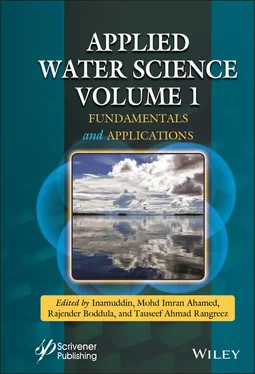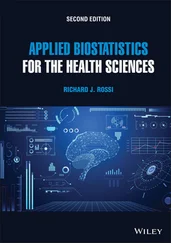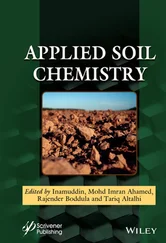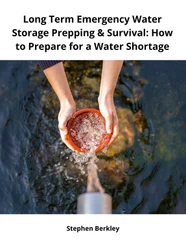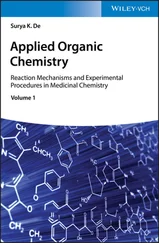Ozone is an electrophilic and a strong oxidant, which can be used directly or indirectly. When ozone is used directly without irradiation or a catalyst, the process is called ozonation, whereas when in combination with a catalyst or photoactivation, it is classified as an advanced oxidation process. Pharmaceutical compounds with electron-rich functional groups such as double, and triple bonds, and aromatic structures or at certain nitrogen, oxygen, phosphorus, or sulfur moieties undergo direct ozonation (Patel et al., 2019). The formation of HO• occurs when ozone and OH -react in aqueous solution. However, ozonation is not 100% effective, thus the need to combine it with UV irradiation or other oxidants such as H 2O 2. In fact, wastewater treatment plants usually apply ozonation to degrade complex molecules to smaller biodegradable compounds. Although ozonation can be used with unstable effluent flows, it has high construction and maintenance costs. Moreover, the generation of zone is energy intensive, and the mass transfer of O 3from the gaseous phase increases operational costs. Like photolysis, ozonation is sensitive to the physico-chemical properties of water such as alkalinity, organic matter content, pH, the presence of other ions, suspended matter, and temperature.
2.3.4.2.4 O 3/UV/H 2O 2as an Oxidant
To enhance the performance of ozonation, photocatalysts, UV or visible radiation, and H 2O 2can be integrated in advanced oxidation processes. On its own, UV radiation can photodegrade some pharmaceuticals, but will not effectively remove all xenobiotics. Under UV irradiation, H 2O 2generates HO• radicals, which are broad-spectrum oxidants capable of photodegrading pharmaceuticals (Sharma et al., 2019). These advanced oxidation processes successfully remove a range of pharmaceuticals including refractory organics (Patel et al., 2019). In addition, H 2O 2can be applied in enhancing ozonation through perozonation, via mechanisms similar to O 3/UV, augmented with H 2O 2.
With the capacity to work under both homogeneous and heterogeneous conditions, Fenton’s reagent is a strong oxidant made up of Fe 2+and H 2O 2in solution (Meng et al., 2018). In heterogeneous processes, the catalyst is attached on a heterogeneous substrate, and the reactions are driven by the generation of HO• radicals (Tsoumachidou et al., 2017). The Fenton process can degrade pharmaceuticals such as sulfachlorpyridazine, trimethoprim, and tetracycline (Hou et al., 2019).
The adsorption process involves transportation of the solute in the bulk liquid phase, followed by film and pore diffusion, and culminating in adsorption onto the solid phase. Adsorption involves electrostatic interactions, hydrogen bonding, charge-transfer complexation, van der Waals forces, and occasionally strong chemical bonding and electron transfer producing electrostatic interactions (Yahya et al., 2018). The efficiency of adsorption is usually determined by the surface area, pore volume, porous structure, and surface functional groups of the adsorbent. It also depends on the chemical characteristics of the pharmaceutical compounds (Patel et al., 2019). The benefits of the adsorption process for water treatment include low capital investment, low pollutant concentrations can be removed, batch and fluidized/fixed-bed reactor systems can be used, and there are possibilities of regenerating adsorbents for multiple reuse (Gisi et al., 2016; Rosales et al., 2017). Compared to other methods, adsorption removes a wide range of pharmaceuticals and produces less toxic products. Adsorption is also applicable to a wide range of aqueous systems with variable concentration of pollutants (Oliviera et al., 2017). Adsorbents, including biosorbents, activated carbons, biochar, mineral oxides, polymeric materials, and nanomaterials, have been used for the removal of pharmaceuticals in aqueous systems.
2.3.4.3 Hybrid Removal Processes
When used on their own, many treatment methods cannot effectively remove pharmaceuticals from aquatic systems. Integrating multiple methods can be beneficial in enhancing removal. For instance, because microorganisms are susceptible to toxic chemicals, pretreatment with advanced oxidation processes can reduce the death rates of microorganisms, and enhance biodegradation of pharmaceuticals as a result (Patel et al., 2019). In addition, RO processes are sensitive to organics and will benefit from a pretreatment step using carbon filtration, for instance. Adsorption methods have also been combined with photocatalysis to take advantage of the strengths of the individual techniques (Yahya et al., 2018). Overall, integrating different removal methods has great potential; however, the compatibility and synergism of different processes deserves further research.
2.4 Knowledge Gaps and Future Research Directions
Research on pharmaceuticals in aquatic systems is an emerging field replete with several knowledge gaps. Most of these knowledge gaps also apply to other emerging organic contaminants, thus can be considered as generic. A detailed discussion of the knowledge gaps is presented in an earlier review in the context of organic contaminants in Africa (Gwenzi and Chaukura, 2018). The key ones are summarized as follows.
2.4.1 Increasing Africa’s Research Footprint
The bulk of research on pharmaceuticals in aquatic systems is drawn from developing countries, while Africa remains under-represented. Thus, there is need for further research on various aspects of pharmaceuticals in aquatic systems in Africa. This is critical due to the several human exposure risk factors highlighted.
2.4.2 Hotspot Sources and Reservoirs
Studies investigating the sources and reservoirs of pharmaceuticals have largely focused on centralized wastewater systems and receiving aquatic systems. Several potential hotspot sources and reservoirs in developing countries remain under-studied. These include on-site sanitation systems such as septic tanks and pit latrines, solid waste repositories such as non-sanitary landfills or waste dumps, and cemeteries and gravesites.
2.4.3 Behaviour and Fate in Aquatic Systems
Our understanding of the behaviour and fate of pharmaceuticals in aquatic systems remain imperfect. This is because limited long-term data exists on speciation, phase partitioning among various aquatic components, and uptake and bioaccumulation by aquatic organisms including food plants and animals. Moreover, the available data is limited to a few pharmaceuticals, while the biogeochemical behaviour and fate of a myriad of pharmaceuticals are still poorly understood.
2.4.4 Ecotoxicology of Pharmaceuticals and Metabolites
Pharmaceuticals co-occur in aquatic systems with other environmental stressors such as toxic metals, nutrients, and other emerging contaminants. The ecotoxicology of single pharmaceuticals and their mixtures, and their interaction with other environmental stressors at environmentally relevant concentrations has received limited research attention. Thus, ecotoxicological findings based on individual pharmaceuticals investigated at concentrations not representative of those in the environment may yield misleading results.
2.4.5 Human Exposure Pathways
To date, information of the human exposure pathways remain largely qualitative. Few studies have quantitatively estimated the contribution of the various intake pathways to human exposure to pharmaceuticals in aquatic systems. Yet, such data is critical for quantitative human health risk assessment.
Читать дальше
